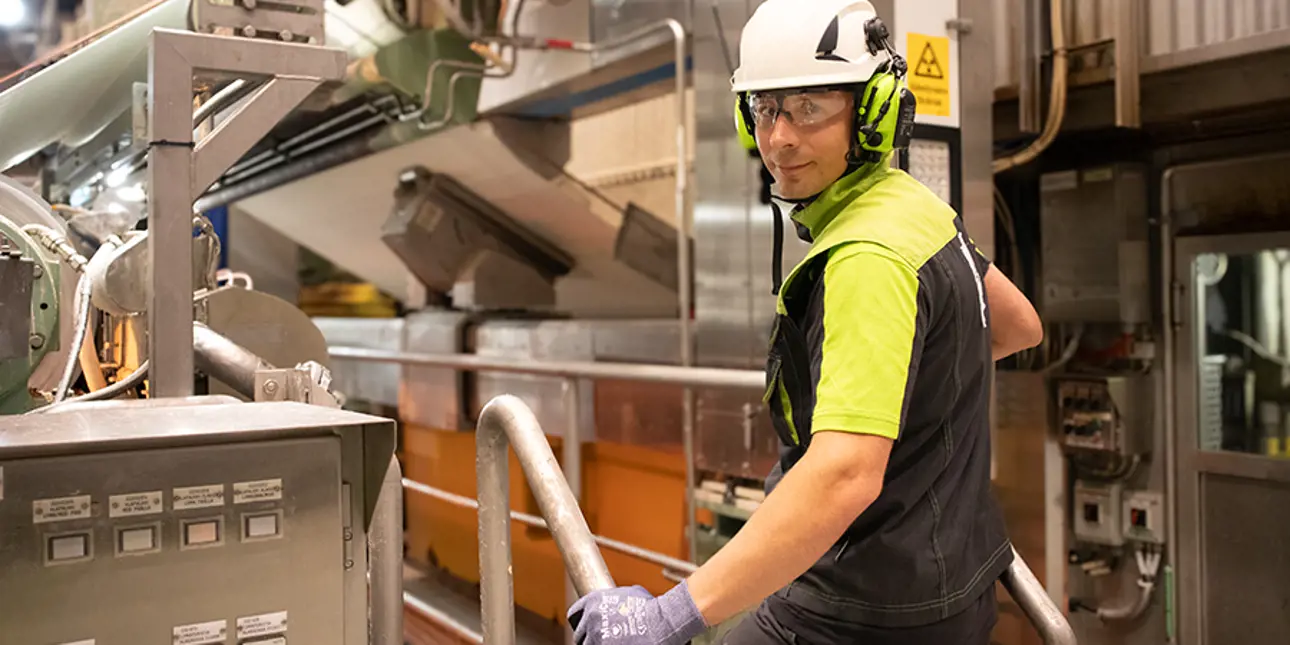Metsä Board Kyro ensures consistent quality with upgrades
Metsä Board Kyro, established in 1870, is one of the oldest mills in Finland. The board mill produces 190,000 tons of high-quality fully coated folding boxboards annually, serving the needs of demanding packaging and printing. To enhance both product quality and process efficiency, the first Valmet IQ Web Inspection System was installed at the Kyro mill in 2008, followed by the Valmet IQ Web Monitoring System in 2010. A maintenance agreement ensures that the systems continue to run optimally and stay on the upgrade path.

The Kyro mill uses the Valmet IQ Web Inspection Solution (Valmet IQ WIS) to catch defects before they become problems. Production Manager Jari-Pekka Rantala from Metsä Board Kyro, explains how the WIS is critical for quality control, especially since most surface defects originate in the coating section:
“These devices are excellent at detecting defects early. Our operators can address defects much faster without waiting for the roll to be fully processed.”
“For example, if paste from the coating section starts to accumulate at the edges during long production runs, we can analyze the issue thoroughly. With live footage of the paste build-up, we can respond proactively and develop the process, anticipating and eventually eliminating the problem,” Rantala continues.

The Valmet IQ Web Monitoring System (Valmet IQ WMS) shows a high-definition live video feed of the process. Automatic video capture triggered by critical defects from WIS, such as an edge crack or a hole, allows the root cause to be traced and possibly found where it originated.
Additionally, the latest camera generation allows for the storing of continuous video recording on server hard drives—for example, up to a week of history, so going back to an interesting or critical process situation is possible, even if it was not caused by a break in the sheet.
“The WMS is crucial to us in identifying the root causes of disruptions so that we can take action quickly,” says Jari-Pekka Rantala.
Upgrades offer many benefits
Metsä Board and Valmet have developed a Lifecycle Plan for updating the systems, ensuring a clear understanding of the system's condition and enabling long-term planning.
“A continuous lifecycle agreement makes it easier to plan and develop improvements step-by-step. Having a continuous agreement works well for us, since it enables us to focus more on our core expertise.”
It’s essential to maintain a system in good condition. The Valmet IQ WIS introduced in 2010 has so far been maintained without major updates, but a clear path to upgrades is available.
“Valmet’s service team has only replaced LED lights or worn-out glass as needed. Additionally, computers have been upgraded in a timely manner, keeping IT security up to date. Having the latest generation of software allows us to use the latest cameras, while still being backwards compatible with oldest models. The WIS lifecycle path includes updates in phases by using the existing frame and integrating new components.”
For older systems, it's worth considering both lifecycle updates and the potential benefits of new camera technology Rantala explains:
“Our latest WMS upgrades included new pin-hole cameras that provide HD image quality, which makes a big difference. Thanks to their compact size, they fit well in process areas with limited space. Pin-hole cameras are also much better because they stay cleaner than previous generations when there’s a lot of humidity or splashing paste,” says Rantala.
Upgrades are performed in phases, prioritizing the most critical areas first while using old cameras as spare parts.

“Our collaboration with Valmet has been successful, with updates progressing systematically and according to planned phases. Since we upgraded our servers and software, we can operate both new and old cameras simultaneously. Not all upgrades have to be scheduled during the annual shutdown. A couple of cameras can be easily installed during shorter shutdowns.
“All start-ups with Valmet have consistently been smooth and their expertise has been valuable, especially the specialized knowledge of the process and quality vision (PQV) experts.”
Tip from Jari-Pekka Rantala: Depending on the system size, it may not be practical to update everything at once. If the system is maintained properly and remains operational, updates can be carried out in stages as needed.


